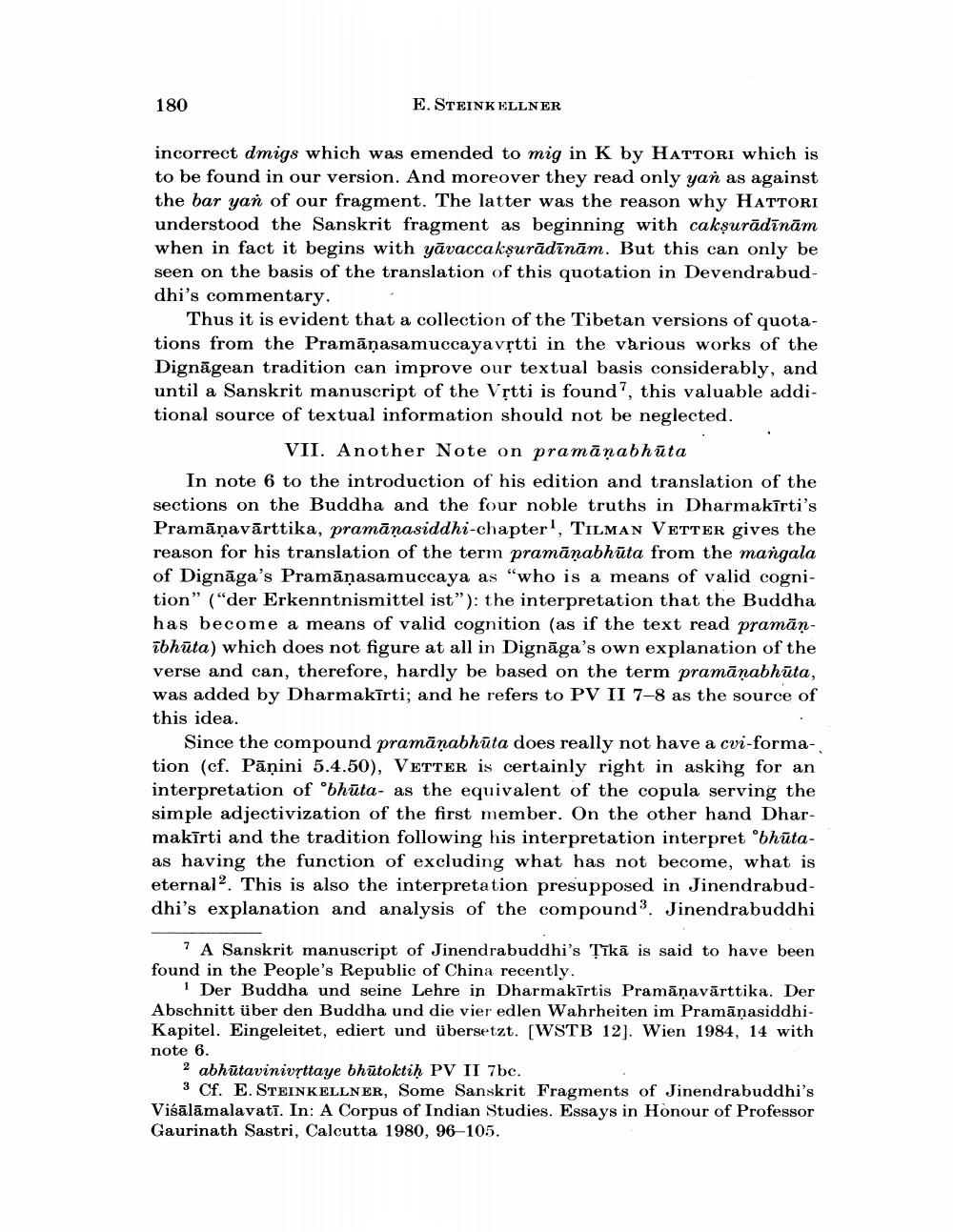________________
180
E. STEINK ELLNER
incorrect dmigs which was emended to mig in K by HATTORI which is to be found in our version. And moreover they read only yan as against the bar yan of our fragment. The latter was the reason why HATTORI understood the Sanskrit fragment as beginning with cakṣurādinām when in fact it begins with yāvaccakṣurādīnām. But this can only be seen on the basis of the translation of this quotation in Devendrabuddhi's commentary.
Thus it is evident that a collection of the Tibetan versions of quotations from the Pramāṇasamuccayavṛtti in the various works of the Dignāgean tradition can improve our textual basis considerably, and until a Sanskrit manuscript of the Vṛtti is found", this valuable additional source of textual information should not be neglected.
VII. Another Note on pramanabhuta
In note 6 to the introduction of his edition and translation of the sections on the Buddha and the four noble truths in Dharmakirti's Pramāṇavärttika, pramäṇasiddhi-chapter', TILMAN VETTER gives the reason for his translation of the term pramāṇabhūta from the mangala of Dignaga's Pramanasamuccaya as "who is a means of valid cognition" ("der Erkenntnismittel ist"): the interpretation that the Buddha has become a means of valid cognition (as if the text read pramāṇibhata) which does not figure at all in Dignaga's own explanation of the verse and can, therefore, hardly be based on the term pramāṇabhūta, was added by Dharmakīrti; and he refers to PV II 7-8 as the source of this idea.
Since the compound pramäṇabhuta does really not have a cvi-formation (cf. Panini 5.4.50), VETTER is certainly right in asking for ant interpretation of 'bhata- as the equivalent of the copula serving the simple adjectivization of the first member. On the other hand Dharmakirti and the tradition following his interpretation interpret "bhataas having the function of excluding what has not become, what is eternal". This is also the interpretation presupposed in Jinendrabuddhi's explanation and analysis of the compound". Jinendrabuddhi
7 A Sanskrit manuscript of Jinendrabuddhi's Tīkā is said to have been found in the People's Republic of China recently.
1 Der Buddha und seine Lehre in Dharmakīrtis Pramāṇavārttika. Der Abschnitt über den Buddha und die vier edlen Wahrheiten im PramāṇasiddhiKapitel. Eingeleitet, ediert und übersetzt. [WSTB 12]. Wien 1984, 14 with note 6.
2 abhūtavinivrttaye bhutoktiḥ PV II 7bc.
3 Cf. E. STEINKELLNER, Some Sanskrit Fragments of Jinendrabuddhi's Viśālāmalavatī. In: A Corpus of Indian Studies. Essays in Honour of Professor Gaurinath Sastri, Calcutta 1980, 96-105.




